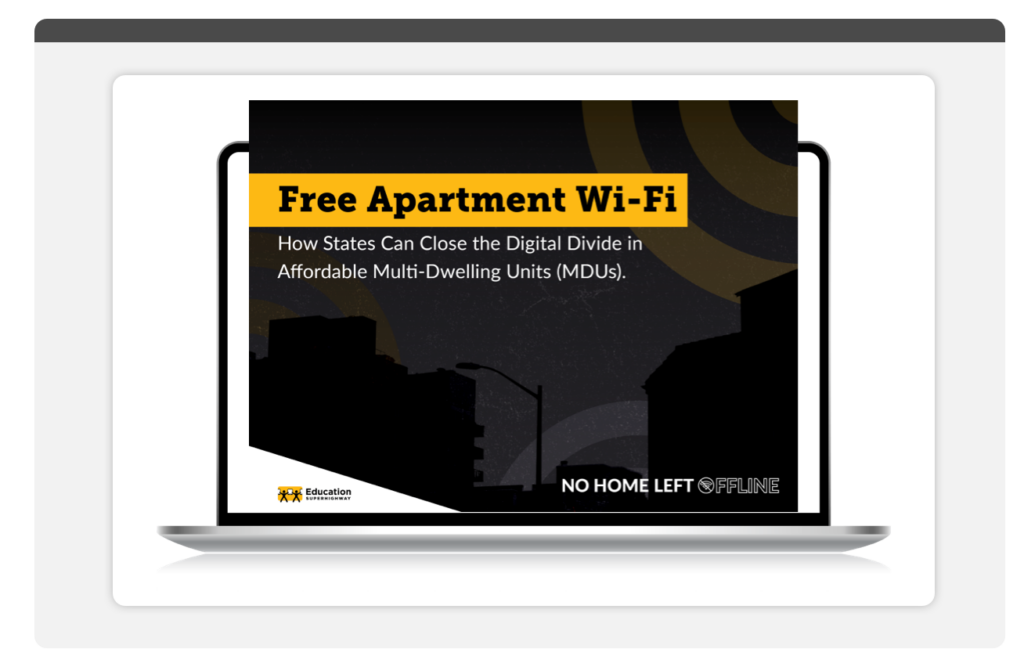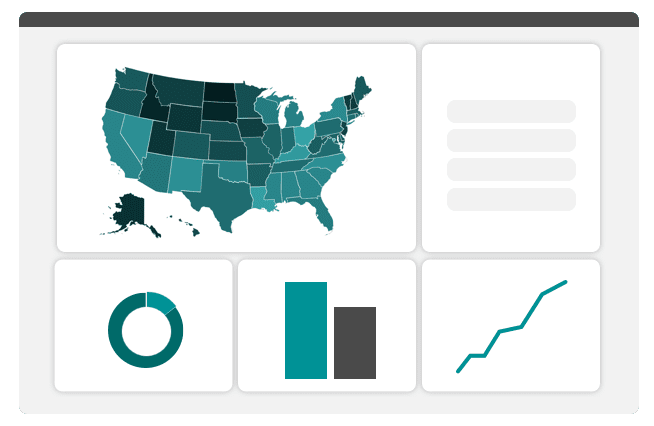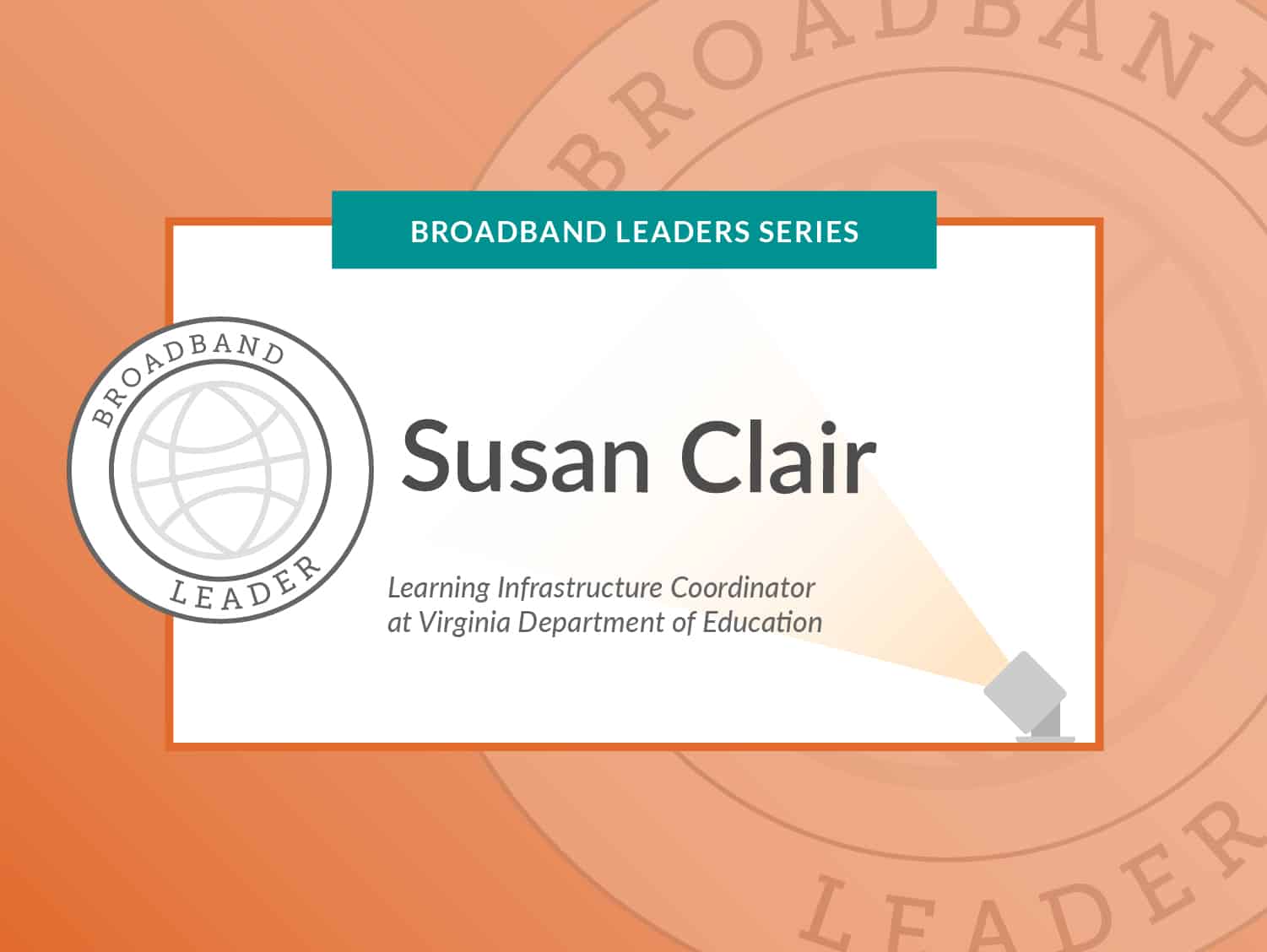In 2016, EducationSuperHighway worked with the Virginia Department Of Education (VDOE) to hire an E-rate and school technology specialist. VDOE hired Susan Clair, who has since worked closely with the ESH team over the past 3 years to upgrade 99% of their school divisions to fiber. She’s a big advocate for expanding broadband access and digital equity, and she has become a key strategic planner for school Internet in Virginia.
Tell us about how the K-12 Learning Infrastructure Program (KLIP) began and your role in the program.
ESH was the spark that lit the flame. In 2016, the Governor met with EducationSuperHighway and asked VDOE to build out the program. Bobby Keener and I dusted it off and got really strategic about our approach. Bobby called it the K-12 Learning Infrastructure Program (KLIP), and hired me because I am a former technology director with experience in instructional and information technology.
One of the first things I did for KLIP was establish goals: get fiber to schools that need it, ensure all schools have reliable Wi-Fi, and rebuild the state E-rate program. But we wanted schools to think bigger than just E-rate. We wanted them to see that this program had bigger goals. This was critical because we wanted to provide school divisions with the resources and expertise they needed to make critical decisions about network infrastructure.
In my role as Learning Infrastructure Coordinator, I established the KLIP working group. I believed that the DOE needed input, feedback, and ideas from school technology leaders, telecom providers, and other key stakeholders. This diverse group of stakeholders gave us feedback on network infrastructure and broadband to VA school divisions. The KLIP working group remains a critical feedback channel for the state, and continues to evolves as K-12 infrastructure needs change.
What aspect of your job makes you the most excited to come to work every day?
There is this other looming problem with digital equity. We know almost all schools are on fiber and they’re moving toward increased bandwidth, so our schools are pretty well connected right now. But then we have to look at what happens after school, and what’s going on in education that will impact students that don’t have access to the internet at home. We are still learning, thinking, and researching digital equity to see how to best provide support schools that need to expand access to educational technology tools.
As the Virginia State E-rate Coordinator and a member of the State E-Rate Coordinators Alliance (SECA), you’ve helped dozens of leaders plan school Internet upgrades. What were the biggest challenges to expanding broadband in Virginia?
We’ve really overcome a lot of those barriers over the last several years. The biggest barrier was getting all schools on fiber. The E-rate fiber applications for special construction were very complex, but we had several school divisions take the risk and file applications that got funded.
Affordability was another challenge – we needed to help schools negotiate better pricing to drive down cost for bandwidth. The KLIP was able to provide the tools we needed to help schools negotiate better pricing, like Compare & Connect K-12. We’ve had our challenges, but we’ve created resources, expertise, and our strategic partnership with EducationSuperHighway to eliminate challenges.
Now that most of Virginia’s schools meet the minimum bandwidth connectivity of 100 kbps/student, we are focused on getting them to learn more about how much bandwidth is really needed to support digital teaching and learning.
When you started your position in 2016, only 72% of Virginia school divisions were meeting the FCC’s minimum connectivity goal of 100 kbps / student. Now that 99% of school divisions are meeting that baseline, district leaders are also looking towards the 1Mbps/goal (10x the bandwidth!). Why do you think it’s important for all students to have access to increasingly high speeds?
We have to look at what’s happening in classrooms today – there’s a need for greater bandwidth with the explosion of 1:1 learning and accessing digital content online. For example, with GoOpenVA, Virginia’s Initiative dedicated to openly-licensed educational resources, the amount of digital content will increase even more. An increasing focus on digital content and 1:1 devices will continue to drive the need for more bandwidth in our schools.
The second big initiative that will drive demand for bandwidth is Virginia is for Learners. This initiative represents a commitment to prepare every student to succeed and will include increased focuses on deeper learning, work related experiences, and modernizing standards of learning. These big initiatives are perfect examples of why Virginia schools need to continue to expand access to high-speed Internet.
There have been some amazing broadband success stories in Virginia, from Orange County Public Schools’ $0 out-of-pocket upgrade to Prince William County Public Schools’ bandwidth increase for 90,000 students. What have been some of your favorite stories about the K-12 Learning Infrastructure Program (KLIP)’s impact?
AJ Phillips of Prince William County Public Schools talked with EducationSuperHighway and she took what she learned back to her board to discuss the opportunity for more bandwidth. Robin Bolt of Rappahannock County Public Schools also took advantage of the free resources and support and persisted in bringing fiber to all schools.
And then there are other stories – smaller but still very significant. State master contracts have helped schools to get better pricing on Cat1 and Cat2 services, and made the E-rate process easier. We’ve also heard about districts using CCK12 to negotiate better pricing and using state match to pay for their fiber build out.
How has EducationSuperHighway supported you in your role? What do you think has been our biggest value-add in expanding Internet access across the state of Virginia?
You all have helped us build out KLIP with resources, like CCK12, webinars, and communications for the program. Another big value add was providing us with data on fiber, bandwidth, Wi-Fi and affordability. Overall, you have helped us be strategic in helping schools think about their broadband. With anything from getting on a phone conference call with a school division, to planning meetings with the states, you have been a valuable partner.
Do you have any advice for education technology leaders that are looking to advocate for students and teachers in their own states?
You have to be a change agent, and change agents have to constantly move the agenda forward. Even if you don’t feel like you’re making progress, remember that you are. You have to help people think strategically. You have to get the right people together who want to do difficult, challenging work where they know they’ll have to perform at a high level. It’s not easy to do that, because you have to stay in constant motion to make that happen.
Finally, success comes down to the school district leaders taking advantage of opportunities available, like Prince William County and Rappahannock. In Virgina, we work together to make these things happen.
Stay tuned for the next installment in our Broadband Leaders series, and feel free to connect with us on social media to celebrate K-12 connectivity leaders in your state.






